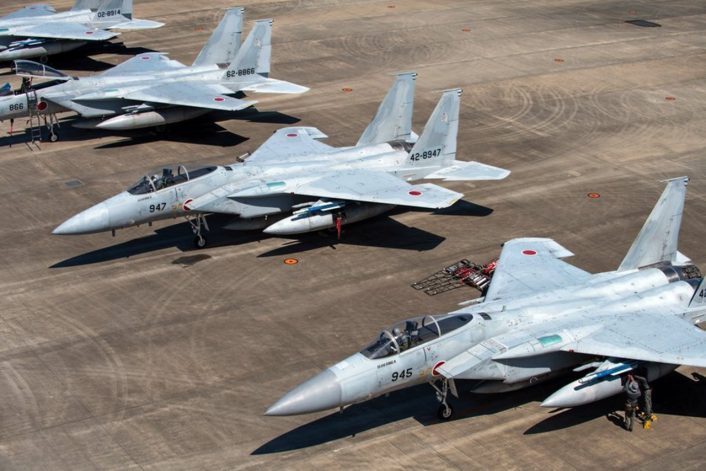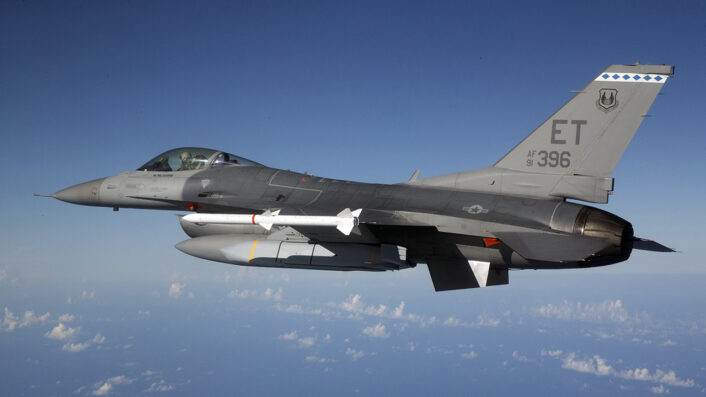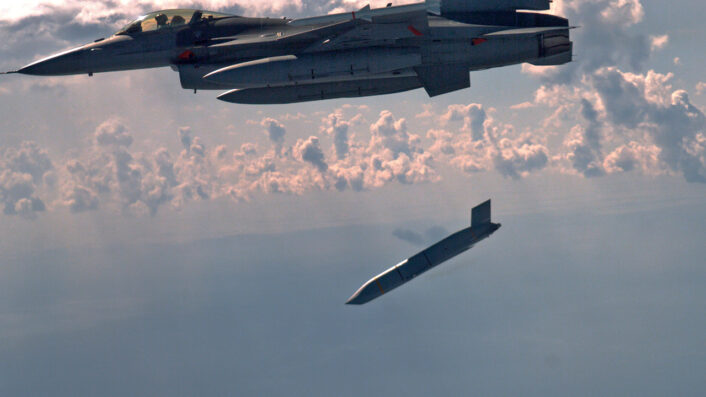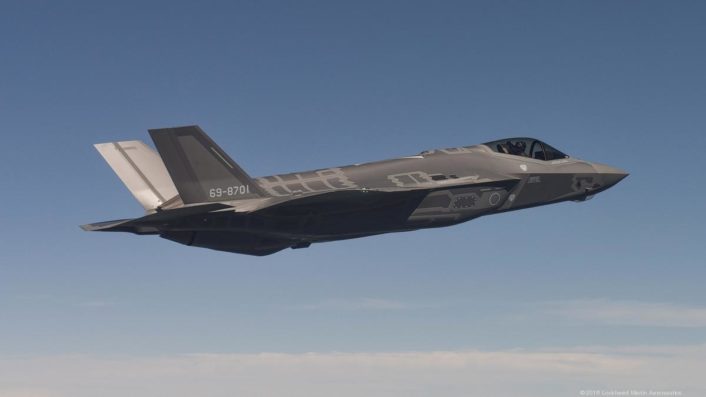Combined with the JASSM-ER and allied electronic, optical, radar, and satellite surveillance, JASDF’s F-15Js will also be able to perform stand-off strikes.
The Japan MoD (Ministry of Defense) approved, on Jul. 4, 2024, the acquisition of the Lockheed Martin AGM-158B JASSM-ER (Joint Air-to-Surface Standoff Missile-Extended Range), following a FMS (Foreign Military Sales) package cleared by the U.S. State Department on Aug. 28, 2023. The program sees Tokyo procuring 50 of the JASSM-ER missiles as a long-range land-strike weapon to be used by the JASDF’s (Japan Air Self-Defense Force) F-15J jets.
Reports said the MoD “plans to drastically strengthen its stand-off defense capability,” allowing it to attack from outside the range of adversary anti-aircraft missiles. Tensions between the US-Japan-Taiwan alliance and the China-Russia-North Korea grouping have been consistently high over the last two years. The FMS approval by the State Department, which also includes anti-jam global positioning system, missile containers and training missiles, is worth $104 million.
Our JASSM-ER provides stealthy Extended Range precision for today’s modern defense: https://t.co/P3oiFnrCRt pic.twitter.com/TRPAHiF8Ph
— Lockheed Martin (@LockheedMartin) April 25, 2016
Upgraded F-15Js and JASSMs
“Upgraded F-15s equipped with this missile will have improved electronic warfare capabilities and an increased number of missiles,” states the report. “Further upgrades will be carried out on 68 aircraft that have already been modernized.”
The mention to the electronic warfare capabilities for Japan’s F-15J fleet refer to the $475 million contract Boeing signed as a part of the F-15 Japan Super Interceptor Program in Sep. 2023. The program includes integrating the EPAWSS (Eagle Passive Warning Survivability System) on the Mitsubishi-built F-15Js, allowing the jet to detect and counter ground and airborne threats while enhancing situational awareness.
Combined with the JASSM-ER and Allied electronic, optical, radar and satellite surveillance, JASDF’s F-15Js can now undertake standoff strikes in fluid and rapidly evolving battlefield situations that present time-sensitive targets.

Leading air-launched standoff missile
The JASSM is emerging as the mainstay of Allied air-launched standoff weapon for land strikes, with Poland and Finland being among the latest acquiring its Extended Range variant. On May 28, 2024, the Polish government signed a contract to procure another batch of JASSM-ER in a $735 million contract covering 821 missiles, and last year also expressed interest in the JASSM-XR.

This was followed by Finland announcing the acquisition of AGM-158B JASSM-ERs on May 31, to integrate them on the F-35As expected to be delivered by 2026. Helsinki already uses the AGM-158A JASSM, which is carried by the Finnish Air Force’s FA-18C/D Hornets.
The JASSM is also the weapon of choice for the USAF’s Rapid Dragon project. The program envisages both the C-130J Hercules and C-17 Globemaster III packing the missiles in disposable pallets, which are released from the ramps and subsequently eject the groups of the missiles. The service tested this palletized missile release on various occasions, including during an exercise in the western Pacific in Jul. 2023.
In mid-June, the USAF’s (U.S. Air Force) 2nd Bomb Wing at Barksdale AFB in Louisiana (Air Force Base) held exercise Bayou Warrior, which saw the loading of live JASSMs onto the B-52H Stratofortress strategic bomber as a part of a readiness exercise. The drill tested the wing’s ability to “generate, load, and deliver conventional weapons in a simulated environment,” underscoring the logistical, non-combat and technical support element of general warfighting.
3/ “While stabilized and descending under-chute, this new deployment system sequentially released multiple JASSM-ER mass simulants and demonstrated the ability to safely de-conflict the airspace between weapon release intervals.” pic.twitter.com/dkXhBgpWr7
— Guy Plopsky (@GuyPlopsky) August 20, 2021
The JASSM
The JASSM is a LO (Low Observable) missile, which deploys its folded wings after being dropped from the launching aircraft. The weapon is capable of following pre-set routes on targets set before take off on the ground, and changing directions to evade and confuse enemy AD (Air Defense) missiles. The turbojet-powered missile has a range of 370 km and carries a 450 kg WDU-42/B penetrator warhead.
The AGM-158B JASSM-ER, meanwhile, according to the CSIS (Center for Strategic and International Studies), is powered by a turbofan engine and can reach distances of nearly 1,000 km.
The missile is guided by an INS/GPS unit developed for the JDAM and JSOW bombs, and also uses an IR seeker for terminal guidance. The JASSM incorporates three-dimensional targeting models of the intended targets, of which eight can be stored in each missile. The Air Force indicates that the missile is accurate within a 3 meter CEP (Circular Error of Probability).

Japan’s own Rapid Dragon and standoff missile acquisitions
In August 2023, The Japan Times reported that the MoD was also considering “mounting long-range missiles” on its 15 C-2 transport planes to “improve its standoff defense capabilities.” “The missiles could be used for operations to attack enemy bases such as missile launch sites in counter strike operations (and) the ministry is considering using a type of missile whose engine ignites in the air after the missile is dropped,” says the report.
The report also contained a reference to the USAF’s Rapid Dragon project, mentioning that “the United States are developing related technology.” It then went on to mention that JASSM is set to be introduced on the F-15 fighter jets.
In addition to JASSM, the MoD also announced in January 2024 concluding a contract with Norwegian defense major Kongsberg, on Oct. 18, 2023 to acquire the JSM (Joint Strike Missile). The missiles are scheduled to be delivered by 2026 to be integrated on the JASDF’s F-35As, according to its 2024 budget request document. The JSM is the air-launched version of the NSM (Naval Strike Missile).
The JASSM cannot be housed in the internal weapons bay of the F-35A. Instead, it would need to be carried on the external hardpoints of the Lightning II, which would compromise the aircraft’s Low Observability.


